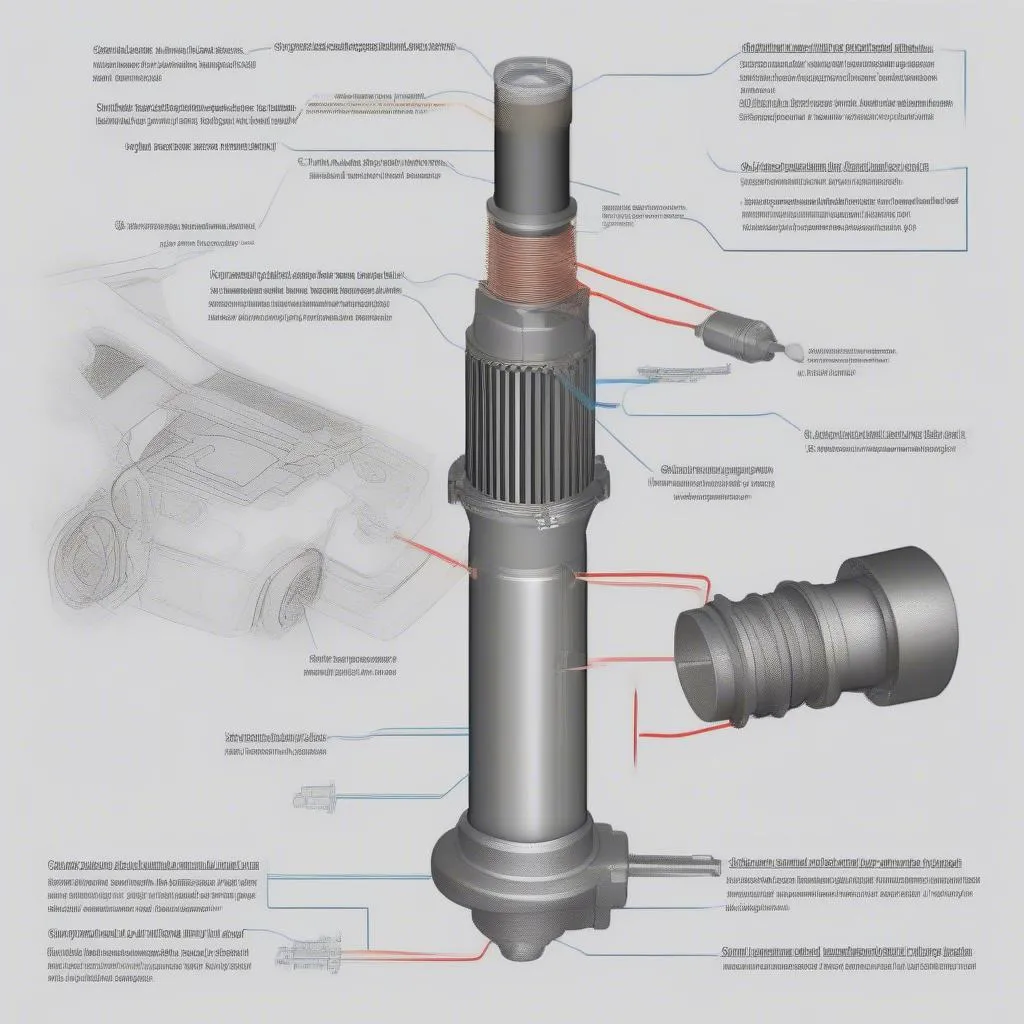Imagine this: you’re cruising down the Pacific Coast Highway, windows down, the smell of salty air filling your senses. Suddenly, your check engine light pops on. You pull over, pull out your trusty OBD-II scanner, and see the dreaded code: P2187. Don’t let this ruin your road trip! Understanding this code is the first step to getting back on the road and enjoying the California sunshine.
What Does OBD Code P2187 Mean?
In the world of car mechanics, OBD code P2187 stands for “System Too Rich Off Idle Bank 1.” Let’s break down this jargon:
- OBD: On-Board Diagnostics, your car’s internal computer system.
- P2187: This specific code indicates a problem with the air-fuel mixture.
- System Too Rich: This means your engine is receiving too much fuel compared to air.
- Off Idle: The issue occurs when the engine is running but not at idle (like when you’re cruising at speed).
- Bank 1: This refers to the side of the engine that contains cylinder #1.
In simpler terms, code P2187 is your car’s way of saying, “Hey, I’m getting too much fuel on one side of my engine, and it’s throwing things off balance!”
Common Causes of OBD Code P2187
Like a mechanic with years of experience, we need to investigate the potential culprits causing this imbalance. Some common causes of P2187 include:
- Faulty Oxygen Sensor (O2 Sensor): This sensor acts like your car’s nose, sniffing the exhaust fumes to determine the air-fuel ratio. A malfunctioning sensor can send incorrect data, leading to an overly rich mixture.
- Leaky Fuel Injectors: Fuel injectors are responsible for spraying the precise amount of fuel into the engine. If an injector is stuck open or leaking, it can flood the engine with excess fuel.
- Vacuum Leaks: Think of your engine as needing a perfect balance of air and fuel, like a harmonious yin and yang. A vacuum leak disrupts this balance, tricking the engine into thinking it needs more fuel.
- Mass Air Flow (MAF) Sensor Problems: This sensor measures the amount of air entering the engine. If it’s dirty or faulty, it can throw off the air-fuel mixture.
- Evaporative Emission (EVAP) System Issues: A leak in the EVAP system, which is designed to prevent fuel vapors from escaping, can introduce excess fuel into the intake manifold.
 Oxygen Sensor
Oxygen Sensor
Diagnosing and Fixing P2187: A Step-by-Step Guide
Now that we know the potential suspects, it’s time to put on our detective hats and diagnose the root cause of P2187.
- Check for Vacuum Leaks: A visual inspection of hoses and connections can reveal obvious leaks. Using a vacuum gauge or spraying a flammable substance (like carburetor cleaner) around suspect areas can help pinpoint leaks.
- Inspect the Oxygen Sensor: A qualified mechanic can test the oxygen sensor’s voltage readings to ensure it’s functioning correctly.
- Examine the Fuel Injectors: A mechanic can test the fuel injectors for leaks or blockage and replace them if necessary.
- Check the Mass Air Flow Sensor: Inspect the MAF sensor for dirt and debris. Cleaning or replacing it might be the solution.
- Inspect the EVAP System: A smoke test can be performed to detect leaks in the EVAP system.
Beyond the Technical: A Holistic Perspective
While the technical aspects of car repair are crucial, some believe that maintaining a car goes beyond the physical. Just as a balanced Feng Shui environment promotes harmony in your home, maintaining your car’s balance can be seen as a way to ensure smooth journeys. Regularly scheduled maintenance, using high-quality fuel, and addressing issues promptly can be seen as ways to respect your car and promote positive energy around your travels.
FAQs About OBD Code P2187
Can I still drive my car with code P2187?
It’s not advisable to ignore this code. Driving with a rich fuel mixture can damage your catalytic converter, spark plugs, and overall engine performance.
How much does it cost to fix code P2187?
The cost of repair varies depending on the root cause. A simple sensor replacement might be relatively inexpensive, while fixing a fuel injector issue can be more costly.
Can a bad gas cap cause code P2187?
While a loose or damaged gas cap can trigger other EVAP system codes, it’s less likely to directly cause P2187.
Explore More: Your Journey to Automotive Knowledge
- Learn about other common OBD codes: [Link to a relevant article on your website about common OBD codes]
- Discover the importance of regular car maintenance: [Link to an article on your website about car maintenance]
Need Expert Help? We’re Just a Message Away!
Feeling overwhelmed? Don’t hesitate to reach out to our team of automotive experts on WhatsApp at +84767531508. We’re available 24/7 to provide guidance, answer your questions, and help you get back on the road with confidence.
Your Car, Your Peace of Mind
Remember, understanding your car’s language is key to a smoother, more enjoyable driving experience. By addressing issues like those indicated by code P2187 promptly and proactively, you’re not just fixing a problem – you’re investing in peace of mind and the long-term health of your vehicle.